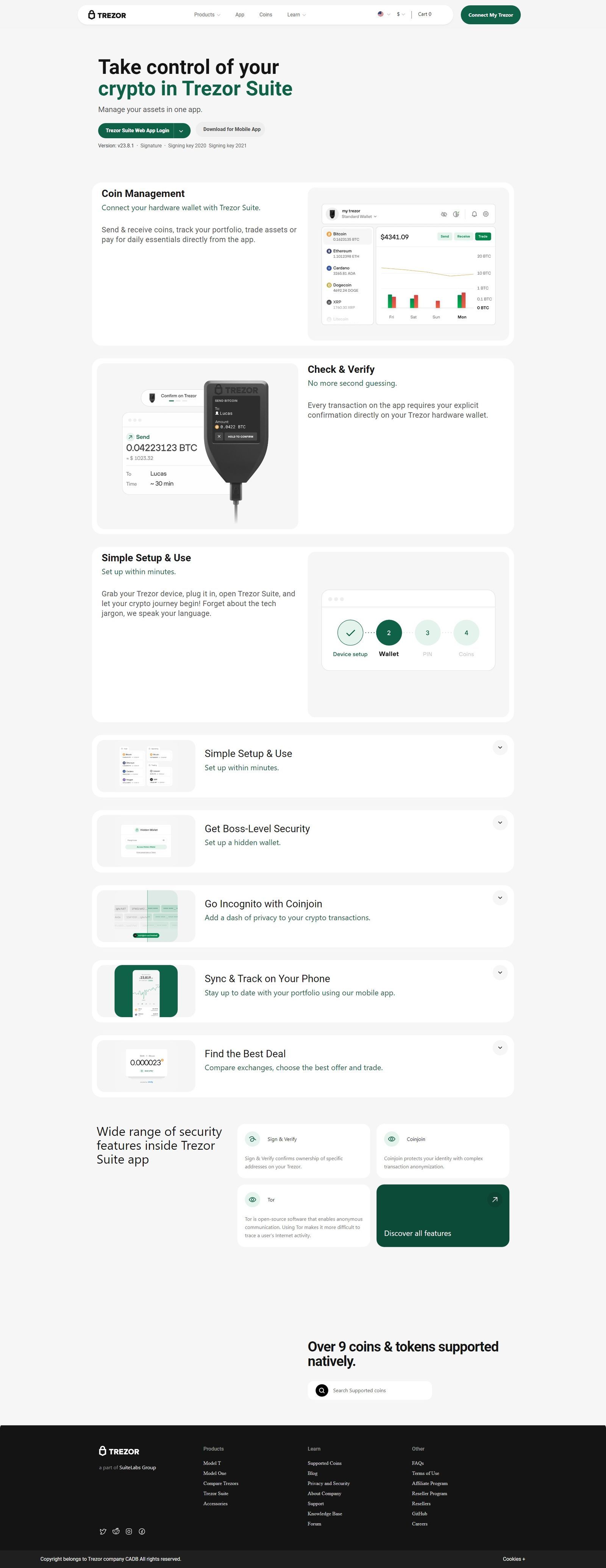Trezor Bridge: A Secure Gateway Between Your Trezor Wallet and Web Interface
In today’s fast-evolving digital world, cryptocurrency holders prioritize security, convenience, and user control. Trezor, one of the most respected hardware wallet brands in the crypto space, has consistently delivered on these expectations. A crucial element that enhances its functionality is Trezor Bridge, a lightweight communication tool that serves as the connective tissue between your Trezor hardware wallet and browser-based applications. This article explores what Trezor Bridge is, how it works, and why it is essential for secure crypto management.
What is Trezor Bridge?
Trezor Bridge is a small software application that facilitates communication between a Trezor hardware wallet (like Trezor Model One or Trezor Model T) and supported web interfaces such as Trezor Suite. Without this component, your computer would be unable to recognize the Trezor device, limiting access to its features and functions. Essentially, Trezor Bridge replaces older browser plugins with a more stable and secure connection method, offering an improved user experience and higher reliability.
Why Trezor Bridge is Necessary
With increased phishing attacks, browser-level vulnerabilities, and the gradual deprecation of USB support in browser extensions, the need for a direct, secure bridge became vital. Unlike browser extensions which may introduce potential attack vectors, Trezor Bridge operates independently from the browser, providing a direct communication layer. This not only improves device recognition but also minimizes reliance on third-party software, further tightening security.
Moreover, Bridge ensures cross-browser compatibility, eliminating problems often associated with plugins that work only with specific browsers. Whether you're using Chrome, Firefox, Brave, or even Microsoft Edge, Trezor Bridge maintains consistent functionality.
Key Features of Trezor Bridge
- Enhanced Security Communication happens over a dedicated local port, meaning sensitive information stays within your device and is not exposed to the internet. This minimizes the risk of interception or data leaks.
- Plug-and-Play Connectivity Once installed, the Trezor Bridge runs in the background, automatically detecting connected Trezor devices and initiating secure sessions without requiring additional input.
- Automatic Updates Trezor Bridge is regularly updated by SatoshiLabs to address bugs, security vulnerabilities, and compatibility issues. These updates are applied automatically, ensuring your connection remains secure and reliable.
- Lightweight Performance It is designed to consume minimal system resources while running silently in the background, making it ideal even for low-spec machines.
Installation and Compatibility
Installing Trezor Bridge is straightforward. Visit the official Trezor.io website and download the Bridge compatible with your operating system (Windows, macOS, or Linux). Once installed, restart your browser and connect your Trezor device using a USB cable. The Trezor Suite will automatically detect the Bridge and facilitate a secure connection.
Note: Always ensure you download the Bridge software from the official Trezor website to avoid malicious versions or phishing attempts.
Conclusion
Trezor Bridge plays a pivotal role in the usability and security of Trezor hardware wallets. By offering a seamless, browser-independent connection, it removes compatibility bottlenecks and enhances overall crypto asset protection. For both beginners and advanced users, installing Trezor Bridge is a fundamental step in achieving a safer, smoother, and more efficient crypto experience. As the digital asset ecosystem continues to evolve, tools like Trezor Bridge remain essential in safeguarding personal finance in the decentralized world.
Made in Typedream